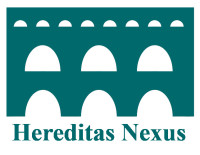 Reviewer: Wouter van Dijk
Reviewer: Wouter van Dijk
The Celtic Myths. A Guide to the Ancient Gods and Legends, Miranda Aldhouse-Green
Thames & Hudson Ltd, London 2015
ISBN: 978-0-500-25209-3
Hardback with dust jacket, richly illustrated, with maps, list of further reading and index
208 pages
£12,95 / €16,95
An introduction to Celtic mythology
Mythology is a slippery subject for those who study the past. In the case of Celtic mythology it is perhaps even harder to grasp the underlying meaning and historical development of these stories because no contemporary written records can be used to assist. However, with the help of archaeological records and medieval literary sources Miranda Aldhouse-Green, Professor Emiritus of Archaeology at Cardiff University sets out to do just that.
In The Celtic Myths, Aldhouse-Green investigates the origins, content and symbolism of mythical tales that sprang from the world and culture of the ancient Celts. ‘The’ Celts? Yes, contrary to some ‘celto-sceptic’ scholars who would most like to ban the term ‘Celtic’ altogether from historical and archaeological research[1], Aldhouse-Green is of the opinion that the term Celt or Celtic isn’t any less useful to describe those Iron Age inhabitants of Europe as it is in the case of for instance the Romans or Greeks, where nobody seems to have problems with these labels. In her own words, and I couldn’t agree more with her:
…the question one can raise is this: is the use of the term Celtic any less legitimate as a label to describe peoples with certain important shared cultural elements than the term Greek or Roman? I think not.”[2]
In ten chapters Aldhouse-Green lead the reader through the pantheon of Celtic mythology. She combines archaeology with history and shows connections between ancient customs known from archaeological evidence and their reflection in early medieval texts, which caught the evolved prehistorical stories on parchment. The emphasis lies on the tales from Wales and Ireland that have been handed down to us over the centuries. Recurrent themes from the stories such as the existence of magical cauldrons, extraordinary powerful and enchanted weaponry and the ever-present ‘otherworld’ of the gods and spirits to name but a few, are explained by the author against the background of the archaeological record. That way we have learned for example the special place the warrior had in society and the role feasting and conspicuous consumption had in Iron Age communities.
While sifting through the many Irish and Welsh myths many similarities occur in themes, symbolism and characters. However, there are also differences between the tales of the two lands noticeable. The most important of these is that the Irish myths we know from the Ulster Cycle and Fenian Cycle to name but two, are much more overtly ‘pagan’ than their Welsh counterparts. In Welsh myths God is frequently mentioned where in Irish mythology many ancient gods and spirits occur, be it sometimes in human form. Despite the Christian veil that has been put over many of the Welsh tales by medieval monks, most notably the stories from the Mabinogion, it is not too difficult to see the pre-Christian origins of most of the stories as Aldhouse-Green demonstrates in her book.
The reader who takes up this book and is already familiar with Celtic history and the deeds of heroes such as Cú Chulainn, Peredur and Finn MacCool will have a slight advantage over he or she who is entirely new to the subject. However, the author’s organized approach and clear and very entertaining writing style will ensure a good understanding of the complex issues that present themselves when studying ancient history and mythology. Moreover with this book provides Aldhouse-Green the interested public with an affordable and reliable alternative to the innumerable pseudohistorical works on the Celts, and in particular their mythology, that are available. I would highly recommend this book to everyone interested in the Celts or early medieval literature.
Wouter van Dijk
[1] See for example the recently published Celts. Art and Identity (London, Edinburgh 2015) edited by Julia Farley and Fraser Hunter.
[2] M. Aldhouse-Green, The Celtic Myths. A Guide to the Ancient Gods and Legends (London 2015) p. 11-12.

Pingback:
The Celts, Alice Roberts |